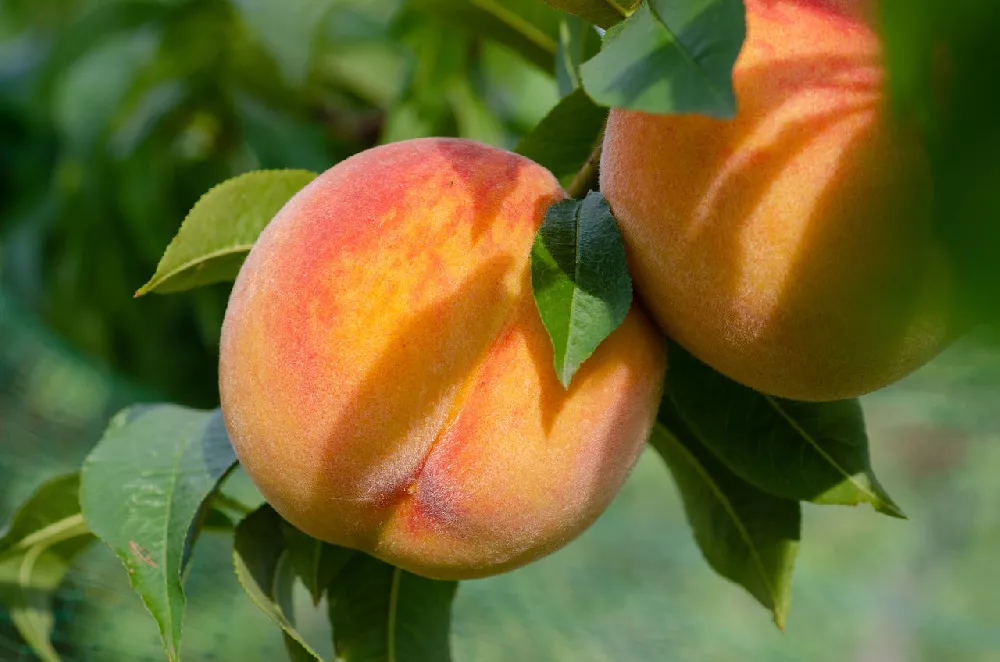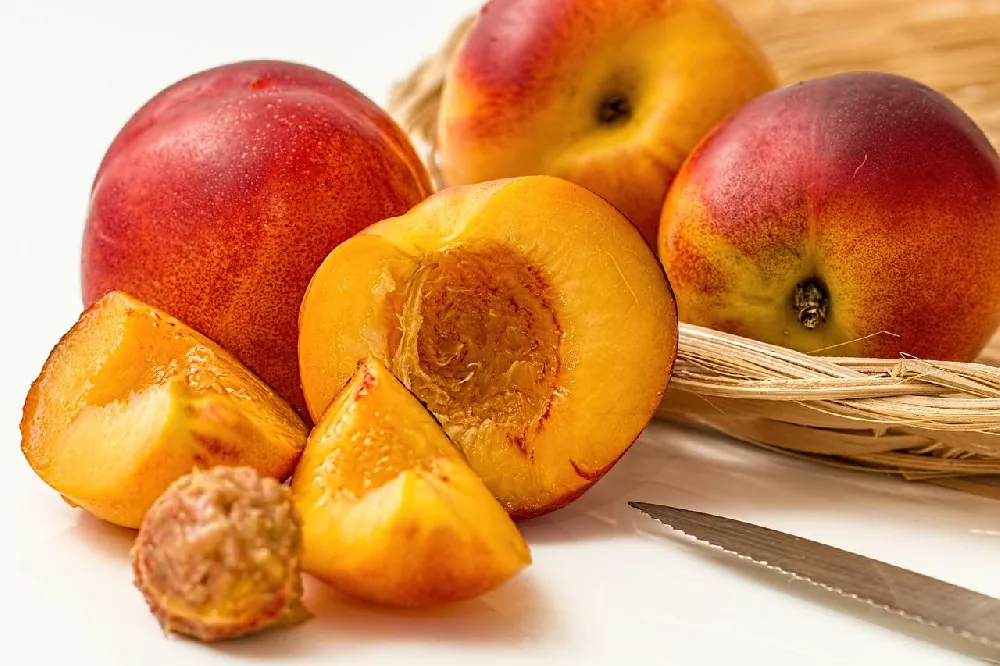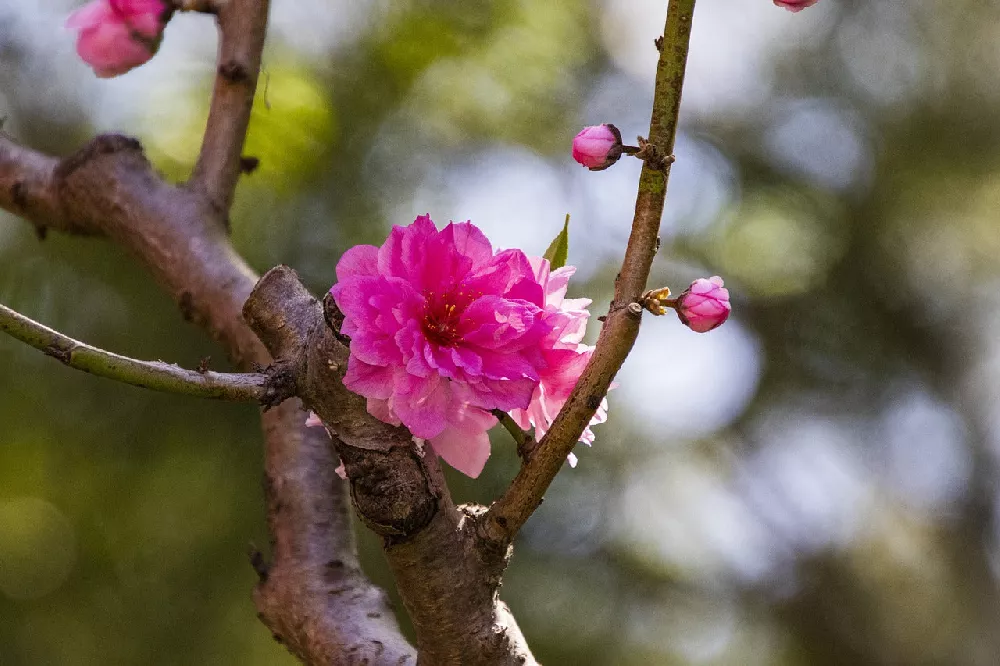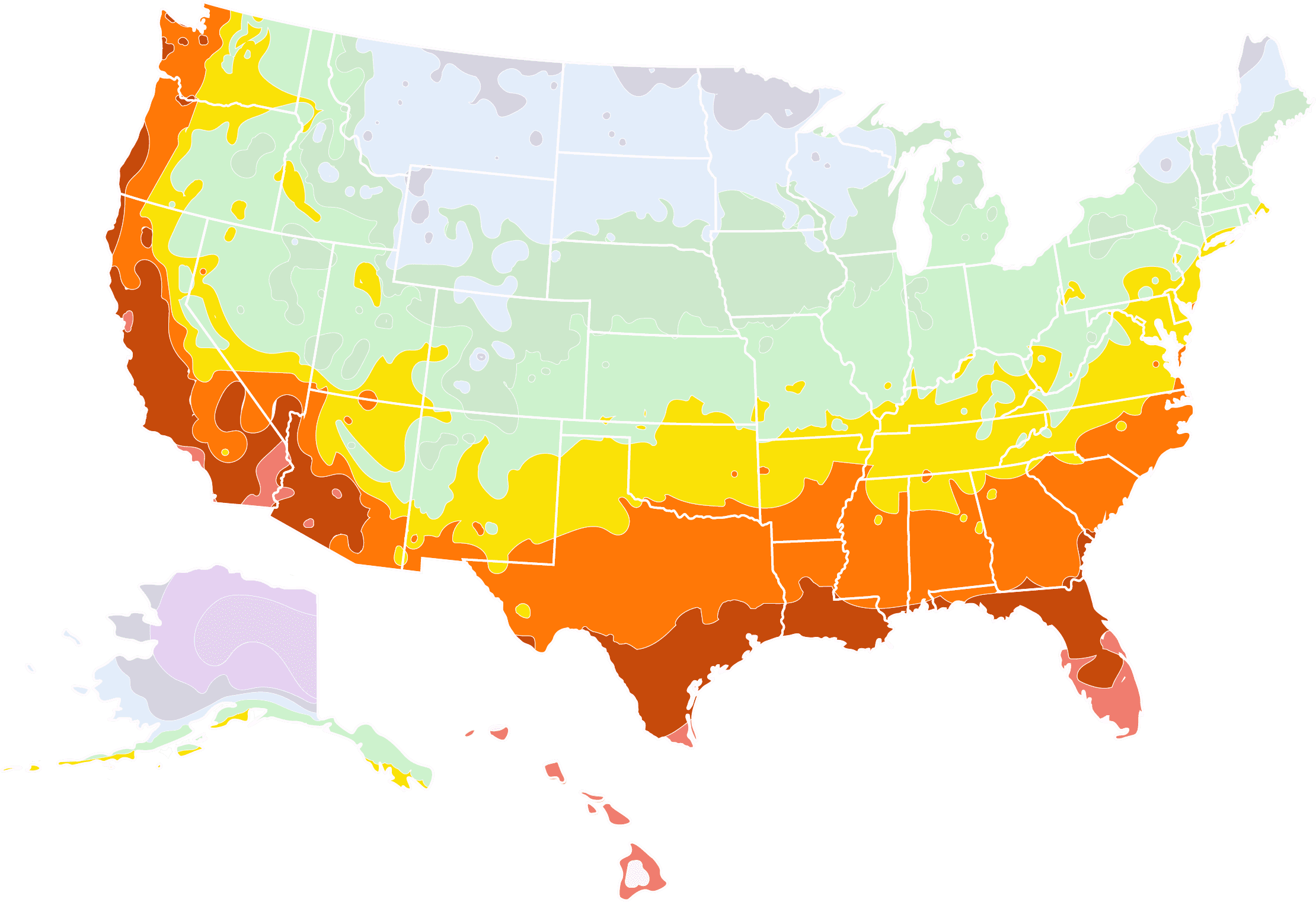- Home >
- Edible Plants >
- Red Baron Peach Tree
Red Baron Peach Tree for Sale - Buying & Growing Guide
- Ships in 1-2 days
- 1-Year Warranty Eligible
- Pots or accessories are not included unless specified in the product options.
Shipping Details:
Products shipped through FastGrowingTrees.com. Once your order is shipped, you’ll receive an email with a tracking number and estimated delivery date. Most orders will ship immediately.
The Red Baron peach tree, Prunus persica 'Red Baron,' is an excellent choice for southern gardeners, as this tree loves warmth. Unlike many fruit trees, it's a low-chill variety that doesn't need extended periods of cold weather to set fruit. But there's more than just that to love about the Red Baron. In spring, it produces profuse double blooms — bright pink-red flowers that present a spectacular display. Following that, of course, there is the fruit. Red Baron peaches are delicious, sweet and juicy, fine for eating fresh off the tree but good for cooking as well. The Red Baron peach tree is not a difficult plant to grow and needs only minimal care, so it is an appropriate choice for those who are new to fruit trees. Here are a few more reasons to bring a Red Baron peach tree to your garden today:
- The tasty fruit is freestone, with flesh separating easily from the seed.
- The Red Baron peach tree only requires 250 chill hours.
- These trees are self-fertile, and you can harvest the fruit with only one tree.
Plant Care
Sunlight

Red Baron peach trees thrive in full sun — at least six to eight hours of direct light a day.
Watering
Water your tree once a week, giving it an inch of water; if the weather is very dry, water more frequently.
Fertilizing

Fertilize with a balanced formula, such as 12-12-12, six weeks after planting and in the spring, summer, and fall.
Planting and Care
Planting instructions
Site your tree in soil that drains well and receives at least six hours of direct sun a day. Avoid planting your tree where it will be in the path of prevailing winds, giving it a more sheltered spot if possible. Unpot the sapling and tease out any encircling roots, which can girdle the tree and slowly kill it. Once unpotted, soak the roots in a bucket of water while you prepare the ground. Dig a hole that’s as deep as the root ball and twice as wide. Place the tree in the hole, and, while holding it steady and upright, fill in around it with topsoil that’s been mixed with well-rotted compost or manure. Tamp down as you go to eliminate air pockets. Water thoroughly. Apply a 2- to 3-inch layer of organic mulch, such as bark chips, around the root zone to conserve moisture and hinder weed growth, but keep it from touching the trunk to avoid rot.
Watering and nutrients
For your tree’s first year, water it every few days so that it will develop an extensive root system. Once the tree is established and growing strongly, you can cut back to once-a-week watering, giving it about an inch of water each time. If you are experiencing very hot or dry weather, increase your supplemental watering. Fertilize your tree with a balanced product designed for fruit trees, such as a 12-12-12 formula, according to package directions. Your first application should be about six weeks after planting. Follow this with applications in early spring (before bud break), summer, and fall.
Pollination
The Red Baron peach tree is self-fertile. This means that a single tree has both male and female characteristics, and there is no need for multiple trees in order to harvest fruit. You will increase your tree’s productivity, however, if you plant more than one tree.
Pruning
Monitor your tree for dead, damaged, or diseased limbs, and trim these out whenever you see them. Maintenance pruning should be done in late winter. Prune to an “open center” shape, cutting out the main central leader and allowing several scaffold branches with wide angles to continue growing. Prune out suckers, and prune back the scaffolds by about one-third. Once the tree is mature, cut out a portion of the older wood each year to allow for new growth, and prune back the previous year’s growth by about half their length. Always make cuts at a 45-degree angle right above a bud.
Pests, diseases, and animals
Pests that may appear on your peach tree include aphids, stink bugs, fruit moths, and borers. Severe infestations may require spraying with an insecticide. For mild infestations, consider releasing beneficial insects, such as ladybugs and lacewings, to control the populations naturally. Diseases of the peach include anthracnose, brown rot, and armillaria root rot. All three of these are fungal in nature. Trim out diseased branches and use a copper fungicide to control them. Animals that can impact your fruit tree include deer and small mammals, such as squirrels, that will be attracted to the fruit. Consider wrapping the bark of young trees to keep deer from nibbling. Netting may help keep animals off the tree at fruiting time.
Harvesting
In most regions, your peaches should ripen in late summer or early fall. Peaches don’t continue to ripen after picking, so leave them on the tree until they are starting to soften slightly and have a sweet smell. Ripe peaches have no trace of green and are the characteristic yellow-blush color. Harvest by hand, twisting them off the tree. Place your peaches carefully on a flat tray to avoid bruising them.
Achieving maximum results
Many gardeners fear growing fruit trees because they believe these trees are finicky and need lots of spraying, pruning, and other care. And there may be some truth to that for professional growers. But a hobby gardener has nothing to fear from growing a few fruit trees in their backyard. There is no one right or wrong way to grow fruit, and trees such as the Red Baron peach tree are more forgiving than you might imagine. Consider spraying, for example. Although there are many products available that may treat one or another insect or disease, there is no reason why most gardeners need to spend their summer spraying. If they do wish to give their tree some protection, a simple spritzing with horticultural oil or fruit tree spray will stave off most insect pests and many diseases, such as anthracnose and rust. So relax, and enjoy your tree without worrying about them!
FAQs
How big does the Red Baron peach tree get?
These are fairly compact trees that may reach a mature height of 12 to 18 feet, although this can be controlled somewhat through annual pruning. The tree's mature width is also 12 to 18 feet, so be sure to leave adequate room between trees if you are planting multiples.
Where can I grow a Red Baron peach tree?
The Red Baron is a peach tree that is adapted for southern gardeners, although it can also be grown as far north as the Pacific Northwest and the capital region on the East Coast. It is hardy in USDA hardiness zones 7 through 10, and it can handle temperatures down to about 10 degrees Fahrenheit.
Is the Red Baron peach tree an attractive tree to add to my landscape?
Yes, very. Even if you aren't a fan of peaches, you might consider growing a Red Baron peach tree purely for the spectacular display you'll have every spring when it blooms. The Red Baron peach tree is a good choice if you have a cottage-themed garden, and it would make a lovely specimen tree in the front yard or an attractive foundation planting near your home.
You can't add more Product Name - Product size to the cart.
OK



